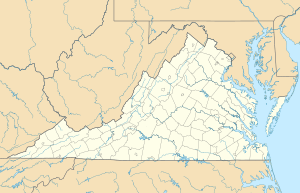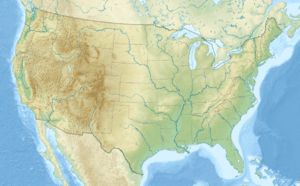Larkin Branch (Hyco River tributary) facts for kids
Quick facts for kids Larkin Branch |
|
|---|---|
|
Location of Larkin Branch mouth
|
|
| Other name(s) | Tributary to Hyco River |
| Country | United States |
| State | Virginia |
| County | Halifax |
| Physical characteristics | |
| Main source | Bluewing Creek divide about 0.25 miles southeast of Larrys Store, Virginia 460 ft (140 m) 36°35′54″N 078°47′25″W / 36.59833°N 78.79028°W |
| River mouth | Hyco River about 2.5 miles south of Omega, Virginia 318 ft (97 m) 36°38′11″N 078°48′22″W / 36.63639°N 78.80611°W |
| Length | 3.82 mi (6.15 km) |
| Basin features | |
| Progression | generally north |
| River system | Roanoke River |
| Basin size | 3.36 square miles (8.7 km2) |
| Tributaries |
|
| Bridges | Cemetery Road, North Fork Church Road |
Larkin Branch is a small stream, also called a "branch," located in Halifax County, Virginia. It flows for about 3.82 mi (6.15 km) before joining a larger river called the Hyco River. It's considered a "2nd order tributary," which means it's a stream that flows into another stream, which then flows into an even bigger river.
About Larkin Branch
Larkin Branch is an important part of the local water system. It helps carry water from its starting point to the larger Hyco River. This stream is a small but vital link in the journey of water through the landscape.
Where Does it Flow?
Larkin Branch begins its journey about 0.25 miles southeast of a place called Larrys Store in Virginia. From there, it mostly flows north, making some turns along the way. Finally, it meets the Hyco River about 2.5 miles south of Omega, Virginia.
What is a Watershed?
Every stream and river has something called a "watershed." A watershed is like a big bowl where all the rain and snow that falls eventually drains into that specific stream or river. The Larkin Branch watershed covers an area of about 3.36 square miles (8.7 km2).
This area gets a good amount of rain each year, around 45.6 inches. About half of the land in the Larkin Branch watershed is covered by forests. These forests are important because they help keep the water clean and provide homes for many plants and animals.



